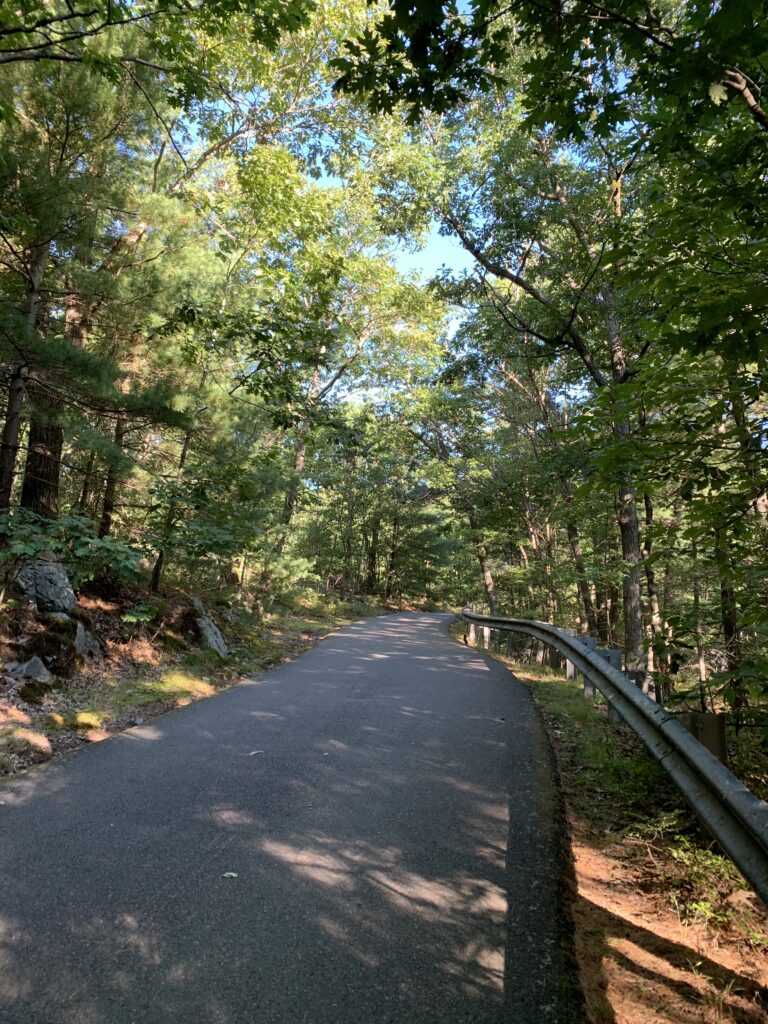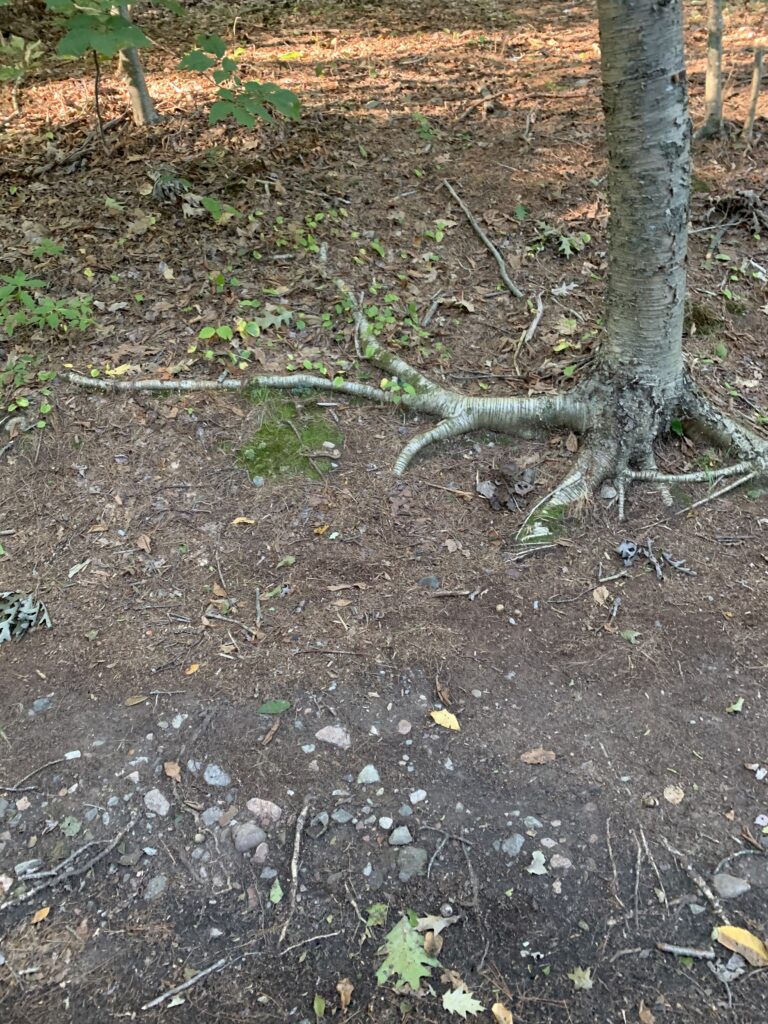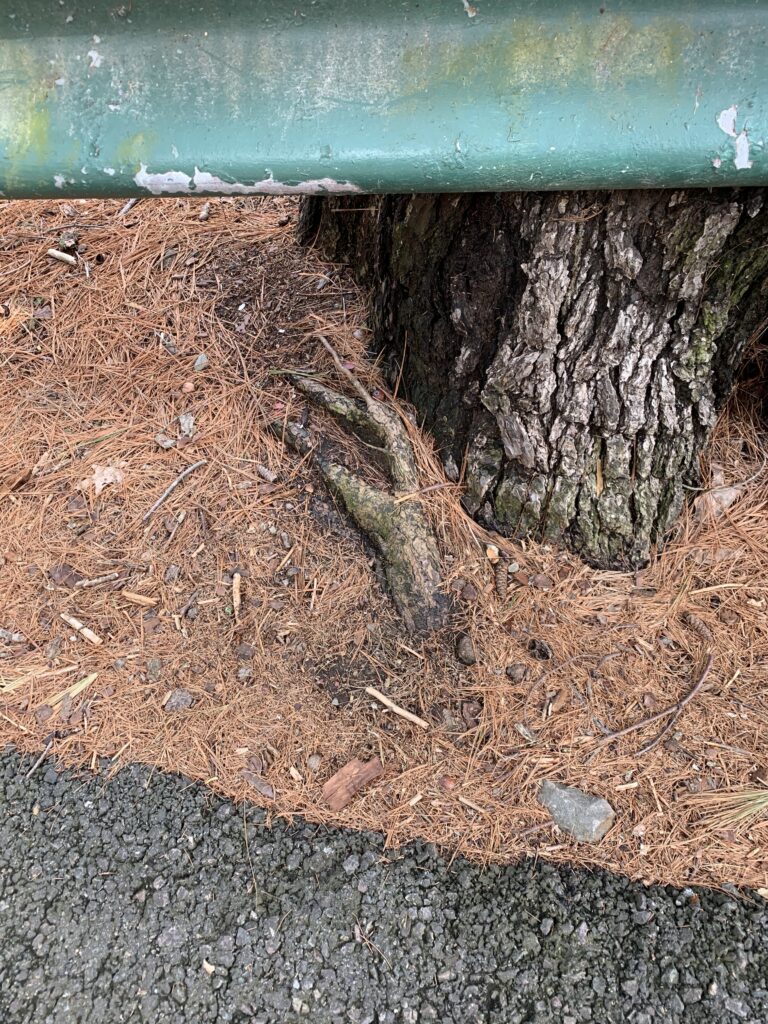Is there a place you frequent that gives you a sense of peace, or whose natural or man-made elements intrigue you, maybe even prompt you to silently describe them was you walk along, taking it all in? If so, consider it a potential setting for your novel. You may have to make adjustments to custom-fit this setting to your story, but that’s part of the fun. For instance, add a road, a path, or rename a city or lake. After all, you’re writing fiction. (Stick to the facts if you’re writing nonfiction.)
Below I describe how Breakheart Reservation, a real place, transformed into a fictitious setting as I wrote my YA novel, The Breakheart Militia. I also provide writing tips on describing setting.
I was eleven when I piled into the Chevy with my family, and my father drove us to where walls of brown and green seemed to form a magnificent tunnel leading to a mysterious world. I can still hear the crackle and popping coming from under the tires as our car crept over a dirt road, toward the picnic area. There we met members of a club my father belonged to for their annual summer picnic. My brothers and I played with other kids at the outing, running races and swimming in a lake. I posed for a picture with my baby sister, who wore a rimmed cotton hat that shaded her big, brown eyes as she sat in a few inches of water in her plastic pool. I sprawled beside it on a large patch of grass.
the real Breakheart reservation
The forested recreation area I visited that summer could have been Breakheart Reservation. I’m pretty sure it was, but its description–the landscape, the aroma of pine and dirt, describes any number of local woodsy places that are like giant, interactive air fresheners, planted around metropolitan areas and beyond. Breakheart has its patches of grass, but mostly its floor is an amber blanket, a mix of past seasons’ pine needles and oak leaves, with dirt, stones, and saplings peeking through its holes.
Decades passed before I returned to Breakheart. Cars can no longer drive in, only pre-approved vehicles, such as the ranger’s pickup truck or the rugged little utility vehicle that takes lifeguards to the shore of Pearce Lake. Two paved loops and a number of dirt paths allow me to feast my eyes on brooks, lakes, the occasional deer, and an abundance of trees of various shapes, sizes and kinds. The familiar fragrance of pine wafts its nostalgic aroma, and I recognize a memory when I pass Pearce Lake, where I swam at least once a child. During a hike with my daughter, I discovered Silver Lake atop a hill off of Flume Path.
Walking along, I study Breakheart’s landscape. Some roots grip the dirt like creepy fingers, and some trunks grow in pairs like sets of long, slim legs, stretching up toward the sky. I relish the vision of sun spilling through the green canopy, casting a golden glow onto the forest floor, as if lighting up a path yet to be discovered. My daughter and I once explored a path that led to the Saugus River, where, according to Alison C. Simcox and Douglas L. Heath, American Indians (Pawtucket or Penacook) settled hundreds of years ago, and thousands of years ago, Paleo-Indians camped, fished, and hunted. In fact, prehistoric tools have been found in Breakheart (Breakheart Reservation (Images of America: Massachusetts).
the transition from real to unreal
Breakheart and its Native American roots inspired the setting of my first book, The Breakheart Militia. For the most part, it is the setting, with some adjustments. Just as Breakheart changed from the 1970s to now, it could change in the near future, speculation my story reflects. In my book, I changed the names of cities but kept the names of Breakheart’s lakes the same. In my book, Breakheart Reservation is in Altamont, Massachusetts, a combination of the town of Saugus and city of Revere, MA. Therefore, in The Breakheart Militia, Saugus River is Altamont River.
Camp Nihan and a golf course nestle against one side of the real Breakheart Reservation. This area inspired Camp Allegiance, where main-character Wade trains and works with his friends, and where his father is a board member and trainer. On the opposite side of the reservation, a hill rises up to an undeveloped area, which I developed into Castle Hill, owned by Al McCoy, a character inspired by a man I used to see walking around the reservation (but no longer do), and who’s reminiscent of Batman‘s “Alfred.” As well, I added trails. Rock ‘n Rill Trail connects to my Silver Lake and Castle Hill Path, a forbidden private trail Wade enters that leads to an obscure, stone-lined path. Deep in this dark path, he pulls on what he thinks is an ancient spearhead, sparking a series of life-changing events.
Speculation on place
Places change over time; therefore, an author can speculate how an inspiring place could change–fiction gives us that freedom. But while names and places are subject to change in realistic fiction, others are less malleable, like roots gripping the hills, the sky peaking through a canopy of trees, the sound of a woodpecker, drumming its territorial tune, the rustle of brush from critters, the crackle and popping of stones under wheels driving on an unpaved path, and even the texture of bark–elements appealing to the senses that we can draw upon when describing setting. (If you’re writing fantasy, these things are, of course, malleable.)
Writing Tip: To make your story more captivating, use literary tools, such as simile, metaphor, and/or personification, to describe setting elements. This draws upon the senses and evokes imagery, which can symbolize important themes and/or foreshadow events. Example: “The roots clutched the hill like old fingers, hanging on for dear life.” Or, “The roots were claws, digging into the earth, as the hurricane whipped the tree back and forth.”
In Conclusion . . .
Before I finished my story set in Breakheart, I’d draw inspiration from its sights, sounds, and aromas. When my setting was etched, I’d walk the trails with my EarPods in, listening to music that complemented my story’s genre and pace, or “personality.” Now that my novel’s written, I see Breakheart differently than when I pondered the idea of writing a story set there, or as I searched for inspiration on its paths. And it’s still as magical as driving through the tree-tunnel, hearing the crackling and popping of an untamed path. Because now when I walk through the reservation, I see and hear my characters and relive a story no one else knows takes place there–yet.
Writing Tip: Take pictures! Study them as you develop lively descriptions that complement your story. The following are just a few of many pictures I’ve taken during my walks at Breakheart Reservation:

(See more Breakheart pictures and inspiration here.)


